13,025 people reached on Lassi with Lavina FB page – 34 Reactions, Comments & Shares – 43 Likes
356 views on LinkedIn
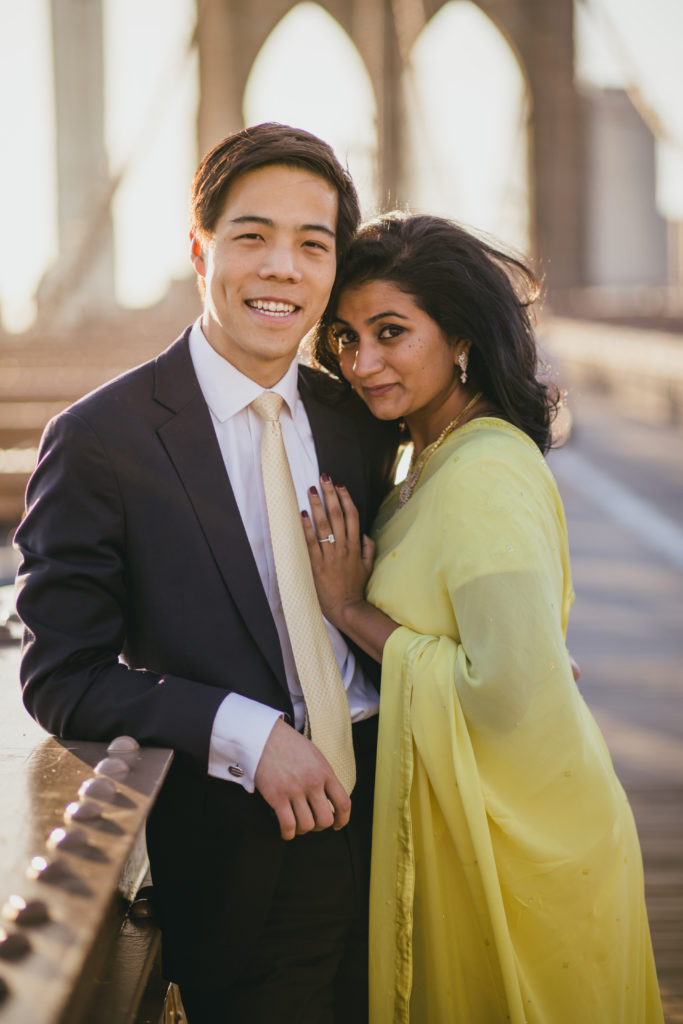
Time to bring out the evergreen love story of Indians in America.
Indians Finding Love & Marriage, American Style
[dropcap]Y[/dropcap]oung Indians growing up in America are finding love and marriage in a myriad ways that their immigrant parents could never have imagined.
When their parents first came to America, it was as couples in an arranged marriage; if a man came as a student to the US, soon enough he would go back for a trip to the homeland and come back bundled with a family-approved wife to look after him in the new country. These parents, raising their children in isolated pockets of small-town America, tried to create the India they had left behind with strict rules of no dating, no proms and with hopes of finding their children arranged matches from their own caste and communities, villages and towns.
Things didn’t always work out that way. America – bold and boisterous – happened to their kids, wrapping around them and transforming them into hyphenated Americans who thought for themselves and dreamed their own dreams.
[dropcap]Y[/dropcap]et surprisingly, many second-generation Indian-Americans did adhere to their parents’ ideals of an Indian spouse, albeit just not an arranged match.
While other communities have freely inter-married in America, Indian-Americans have tended to stay within their own community. The most recent US census survey showed that a whopping 86 percent of Indian-Americans married within their community. Just about 12 percent have married non-Asians and 2 percent have inter-married with other Asians. (2010 American Community Survey and other Census Bureau data; Pew Research Center 2012 Asian-American Survey)
One reason is that the Indian-American population has burgeoned in the US, thus providing young Indians many more choices within their own community. Some find their mates right on college campuses and in the workplace. They don’t have to depend on their relatives back home or even the traditional match-makers of the village or town to find them a suitable spouse; technology has turned matchmaker and freed them to find their own partners, be it on mating websites like Bharat Matrimony or dating sites like Indiandating or Tinder.
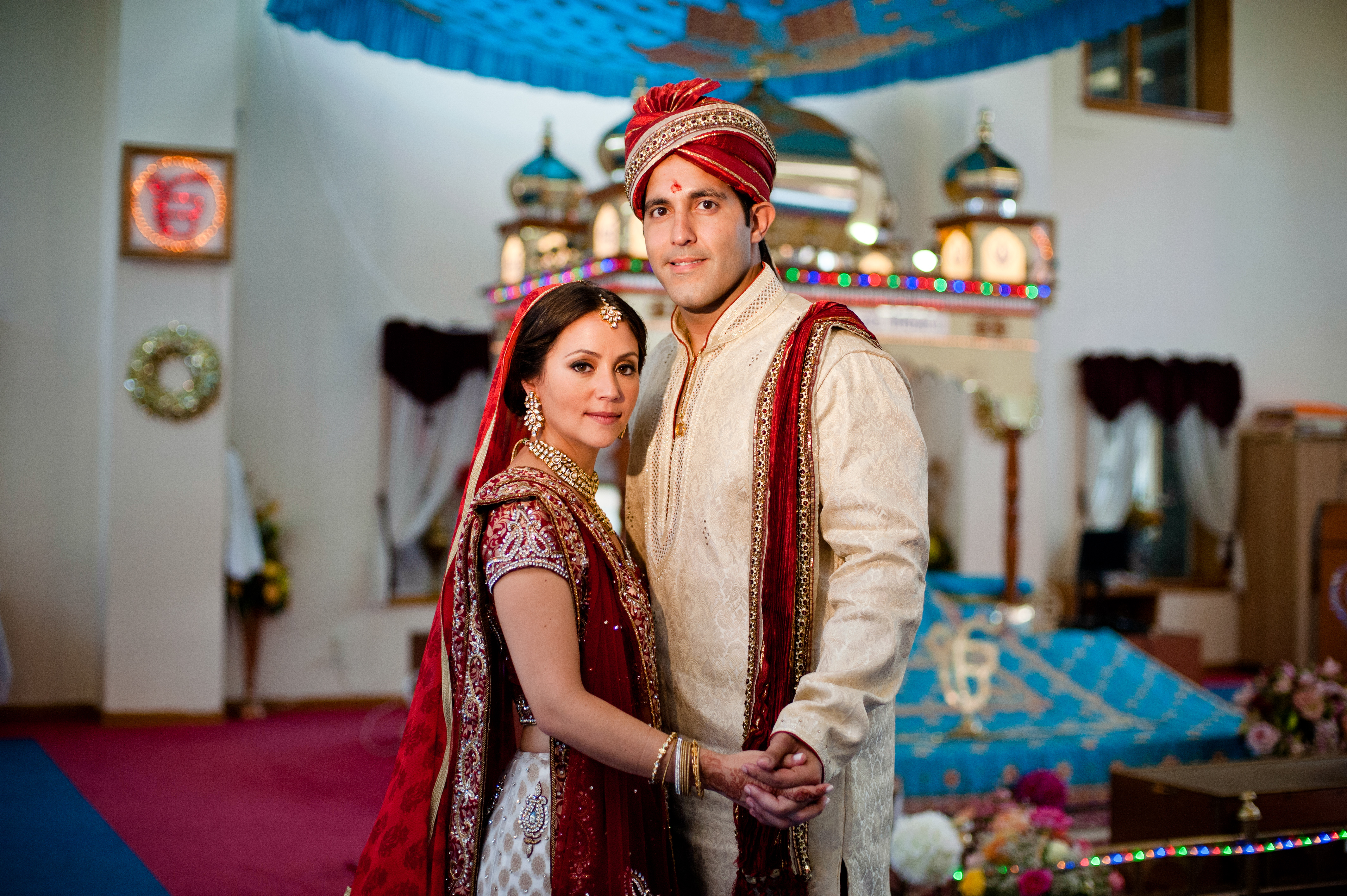
[dropcap]M[/dropcap]ore and more, Indians are meeting their future partners at work and leisure – it is no accident that so many physicians end up marrying physicians and bankers and IT folks tend to find each other. There are so many social events and dance parties where friends of friends connect with each other. One of the prime attractions for Indian-Americans is the commonality of culture, food and the remembered past which adds sweetness to relationships – and also makes parents happy! Parents have given up insistence on the spouse being from the same community and matrimonial connections between varied communities like Sikhs, Gujaratis, Bengalis and South Indians have flowered. As they should!
Jasbina Ahluwalia, who is the CEO of Intersections Match, a service for Indian singles, has clients of varied ages and eclectic interests, certainly not a homogenous population. She said: “While some of our clients feel that connection is most likely with a partner who shares their Indian heritage, others are open to an intercultural partnership. In addition to having non-Indians in our network, we maintain relationships with matchmakers in the mainstream community to serve our clients seeking non-Indians.”
At the same time, as Indian parents have become Americanized and more accommodating of their children’s desires, many are open to their sons and daughters marrying non-Indians, usually Caucasians. The NYT Vows page, dating services, wedding planners, photographers and musicians all confirm this surge in intercultural weddings where Hindu, Jewish, Sikh or Christian services are held in tandem. The blond groom may enter riding on a bedecked horse and the diverse bridesmaids may all do the garba or the bhangra.
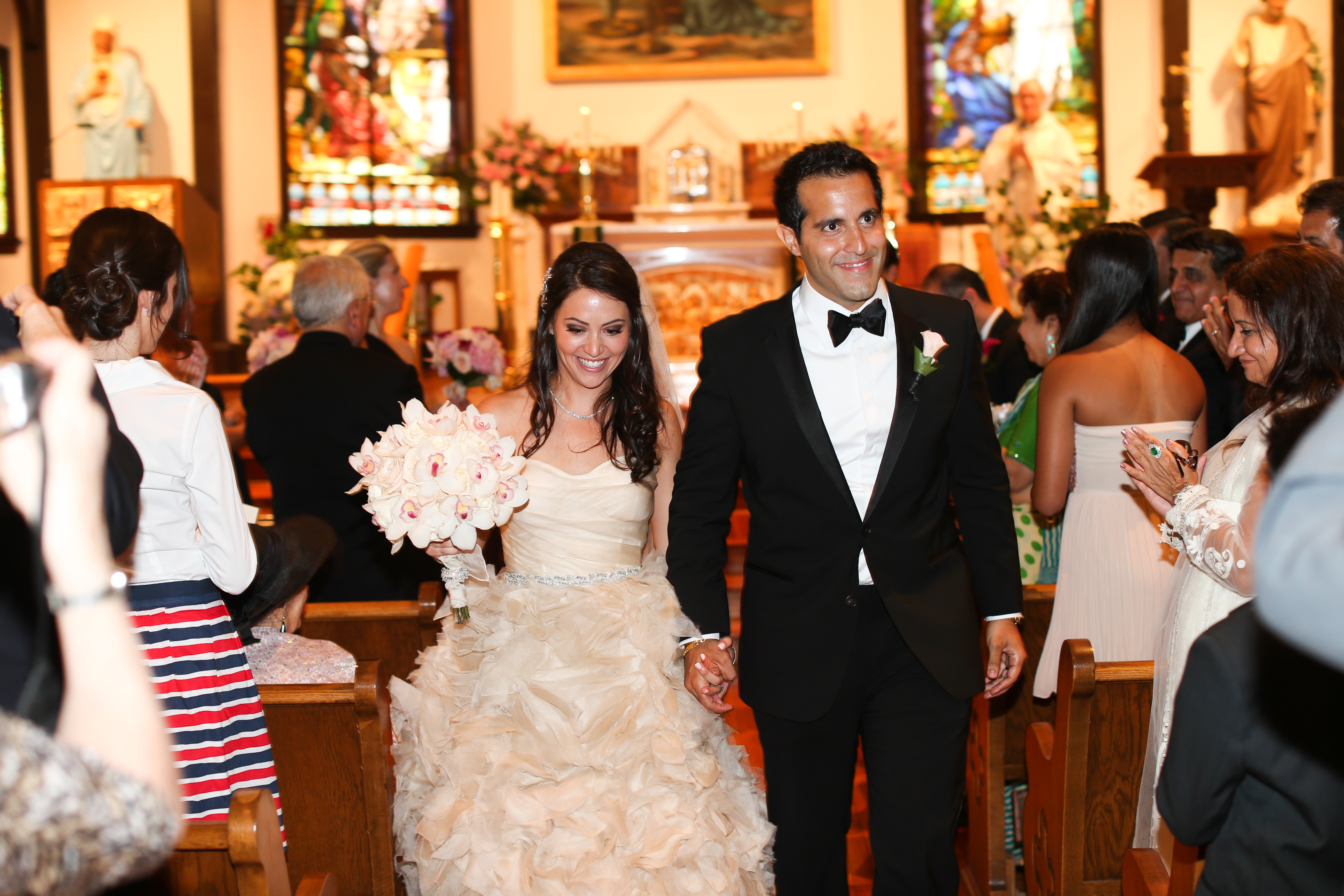
[dropcap]A[/dropcap]mit Khubani of Ho-Ho-Kus, NJ is in the family’s Direct Response Business. He met his wife Katie Zegarelli, who works in the same industry, at a work event in Las Vegas. Amit, who is of Sindhi origin, has a diverse group of friends and a large family and knows many people in intercultural marriages. “It was not always like that,” he said. “I think over the last 10-15 years – as we have grown in confidence and financial stability, a lot more young people have been allowed to explore intercultural marriages. When I was growing up, the subject of intercultural marriages was very taboo.”
The couple had the best of both worlds at their four-day wedding with Hindu pujas and ceremonies in a Sikh Temple followed by a traditional Catholic church wedding, and a huge reception at Capitale with 500 guests. Amit believes that the biggest benefit of an intercultural marriage is to give children a wealth of knowledge passed down from diverse sides: “I think the combination of two different backgrounds offers a unique insight in life, the hard working immigrant story mixed with the confidence of belonging. I also think intercultural children are generally better looking!”
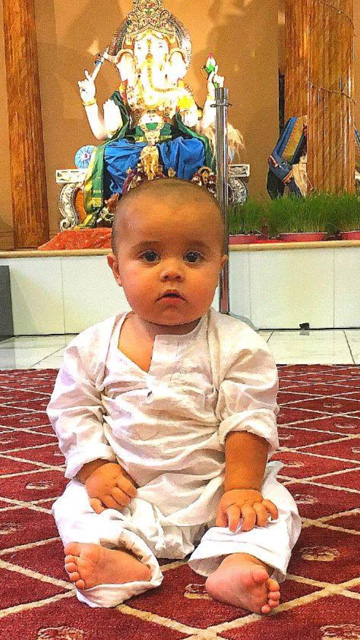
[dropcap]T[/dropcap]heir little son Avi is a great binding force and Amit describes him thus: “ He is such a joyous boy that it is difficult not to have the families really unified in their love for him. My wife is Catholic, so we did baptize him, but we do want to give him his choice in his religion. So far we have done all ceremonies for him, both Catholic and Hindu – so in our viewpoint, he is equipped to handle any situation – in this life, afterlife, or next life!”
The younger generation of Indian-Americans has a much more all-embracing attitude toward race, and think of the unique person, rather than the label. It is no surprise then that 12 percent of Indians were in intercultural marriages at the time of the most recent census and the figure will have surely snowballed by 2020. In an America which is composed of every color and race, it is challenging but not impossible to retain the best of your own culture and adopt from the mainstream, thus creating your own hyphenated identity.
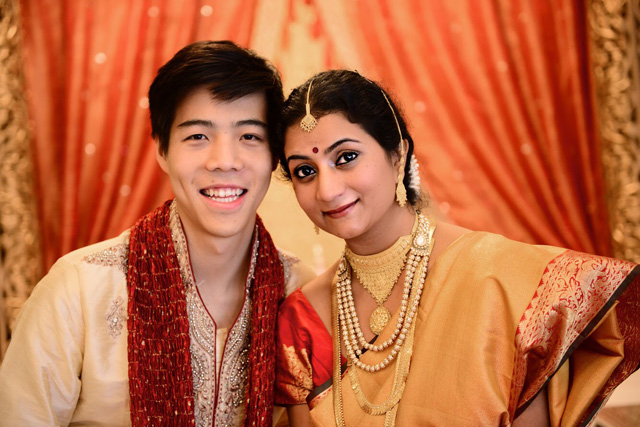
[dropcap]A[/dropcap]ccording to the Pew Report from 2015, 2 percent of Indian-Americans are in intermarriages with other Asians. This trend is growing slowly but seems to make sense since Asians have two big shared passions – family and education. One of the noted intercultural couples that come to mind is the physician-author Siddhartha Mukherjee and his wife, the renowned artist Sarah Sze.
Last year New Yorker Pratibha Vuppuluri married Philip Wu, her colleague at Deutsche Bank. She says, “We did a lot of deals together and in the process I found a best friend and eventually a husband!” She can believe that there are just 2 percent of Indians marrying other Asians though in India she has seen several such couples.
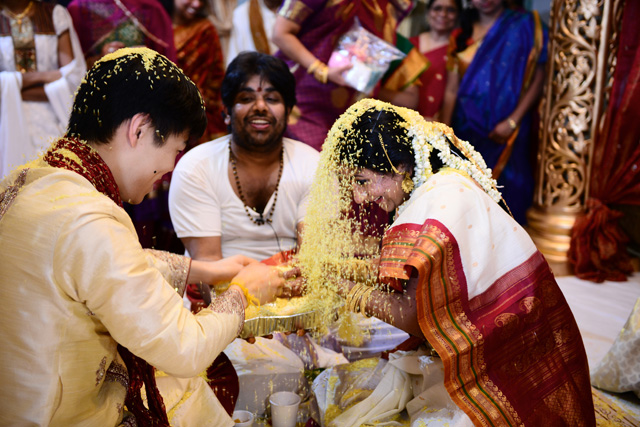
[dropcap]“I[/dropcap] hesitate to say we are opening up but there is a slight movement towards it,” she says about this trend of Indians intermarrying with Chinese or Koreans. “We do share a lot of commonalities – there is a strong focus on extended family – for my sister’s wedding, Phil’s entire family from Hong Kong flew down for it. Decisions are never made in isolation without the extended family so the value system is the same.”
Pratibha, who came to the U.S. only recently, feels that her relatives born here are more traditional than she is as they have held on to their parents’ value system much more. Indeed, slowly, there is a mindset change, an ideology change – it’s slow but there’s definitely a change occurring: “There’s no pattern as such but I hope things are changing. At the end of the day we should not be necessarily finding a partner based just on a few criteria. If you find your best friend within your community that’s good, but if it’s outside the community, well and good too.”
Amit Khubani would agree with her. Diasporic Indians will always have roots in their culture but geographical boundaries are on their way to being torn down, he feels. “The internet has connected communities across the world, and with connection comes an understanding of other cultures. In that sense, I believe that the fear of other belief systems, and the need for tribalism does get reduced. When you bring down those barriers, and connect people from across the world – intercultural marriages will be much more commonplace.”
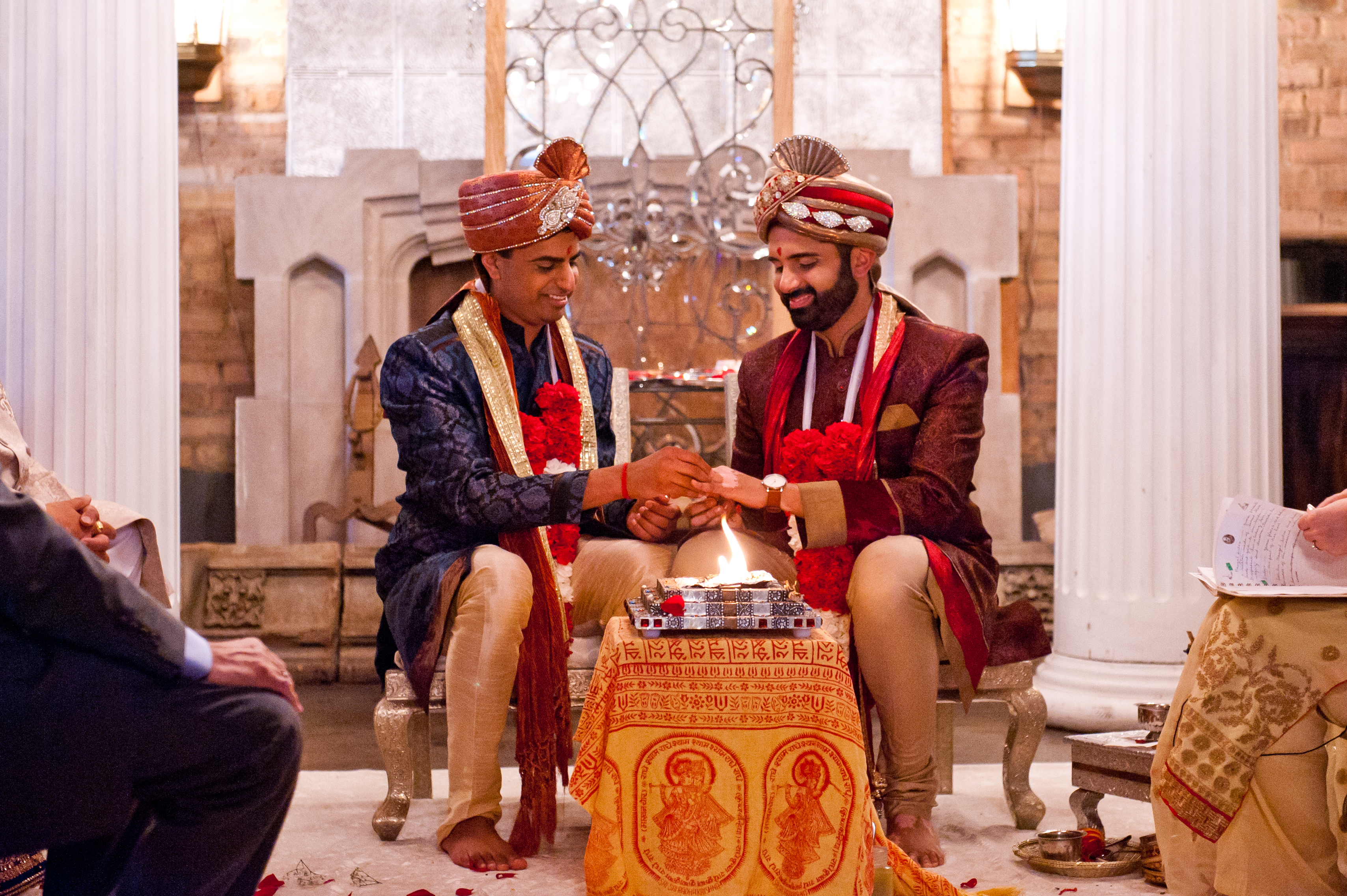
The Gay Big Fat Indian Wedding!
One Couple’s Triumph…
[dropcap]N[/dropcap]ow there’s another aspect to Indian relationships – the gay wedding since all 50 states in the US recognize same sex marriage after the Obergerfell v Hodges decision in 2015. Just last year Neeral Sheth and Anu Hazra, who both work in the medical profession, got married in Chicago – and had the Big Fat Indian Wedding with plenty of supportive family members. Neeral’s father had immigrated to the US as a trained pharmacist while Anu’s parents had came to the US for their education back in the 70’s.
Neeral and Anu were introduced by a mutual friend on an online networking website and after talking for almost a year, finally met in Chicago. As Neeral says, “Our identities as sexual minorities have played a huge influence in the growth of our personalities and viewpoints, as well as the choosing of our professions.” While Neeral focuses on mental health, Anu plans to work with HIV+ populations.
[dropcap]A[/dropcap]fter nearly nine years of dating, they decided to get married and the best part was that their families were totally behind them. Their parents organized a Graha Shanti Puja the day before the wedding with a fully catered Gujarati lunch. In the evening was a sangeet with garba, mehndi and henna artists while friends gave emotional speeches and performed garba, raas and open dancing.
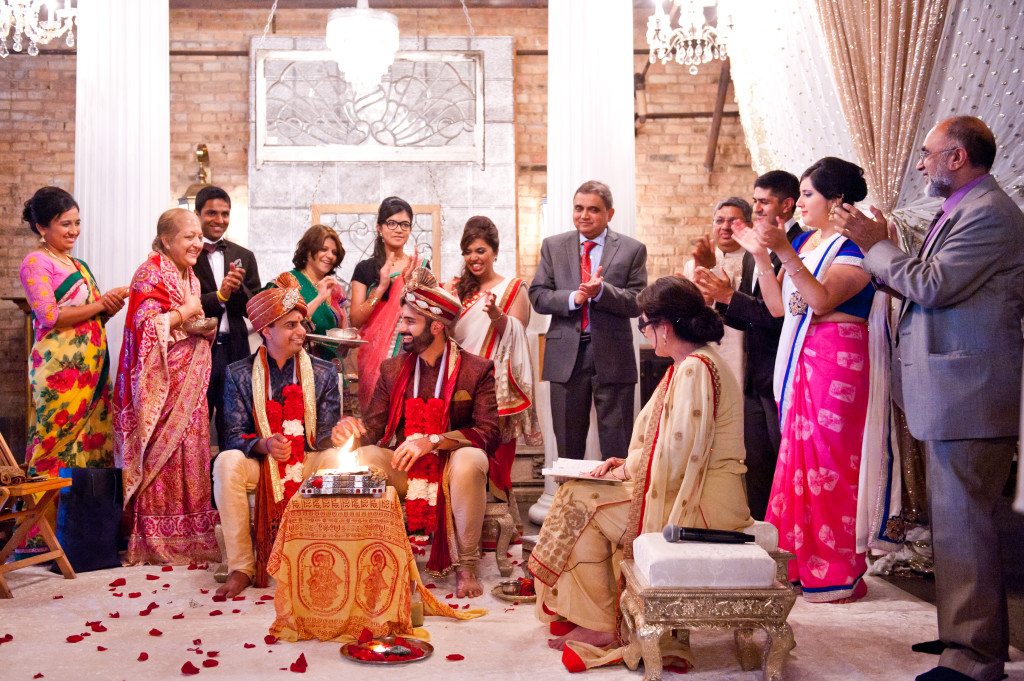
[dropcap]W[/dropcap]hile a local temple had refused to do the same-sex wedding ceremony, they found a female priest Hersh Khetarpal who was happy to conduct the Vedic wedding ceremonies. “We wore traditional Indian sherwanis for the wedding ceremony followed by tuxedo suits for the reception. We had a bridal party full of our closest friends and relatives and the women guests styled their hair and makeup after Sharmila Tagore from the 60s!” describe the two. As Neeral puts it: “After the ceremony was over, it felt so cool to walk down the aisle as a married couple and be showered by rose petals!”
(This article was first published in India Abroad in 2017.)
Related Articles:
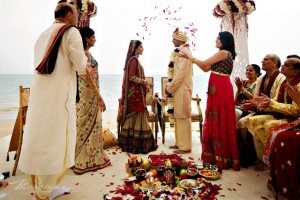
The Big Fat Indian Wedding in America
